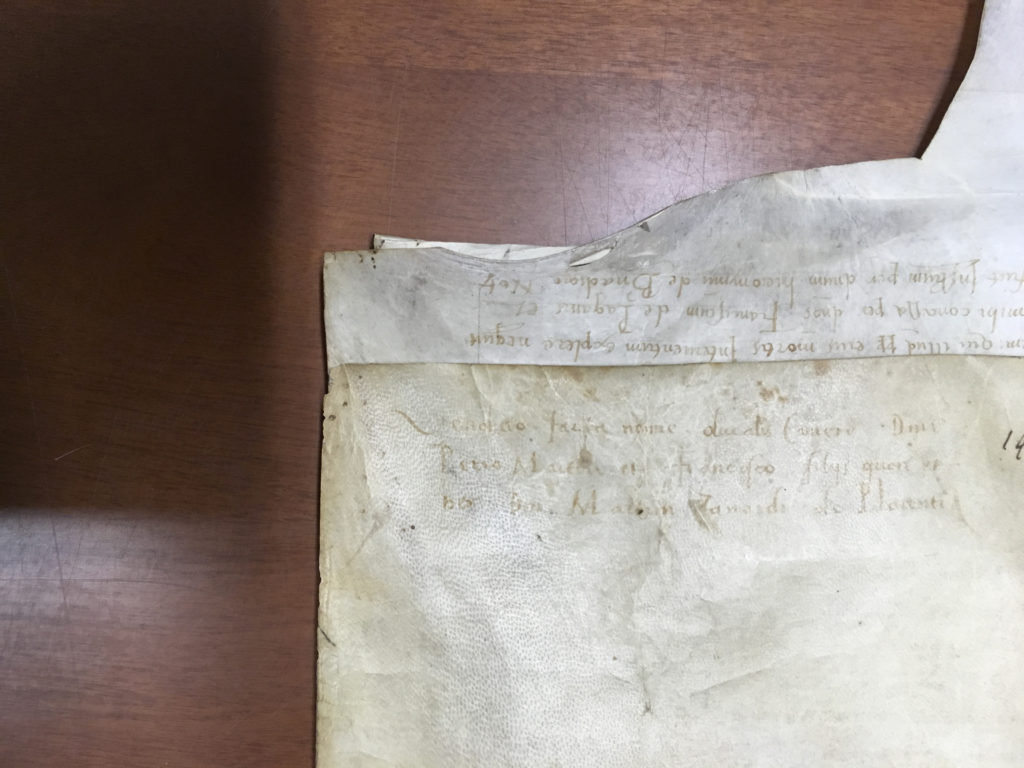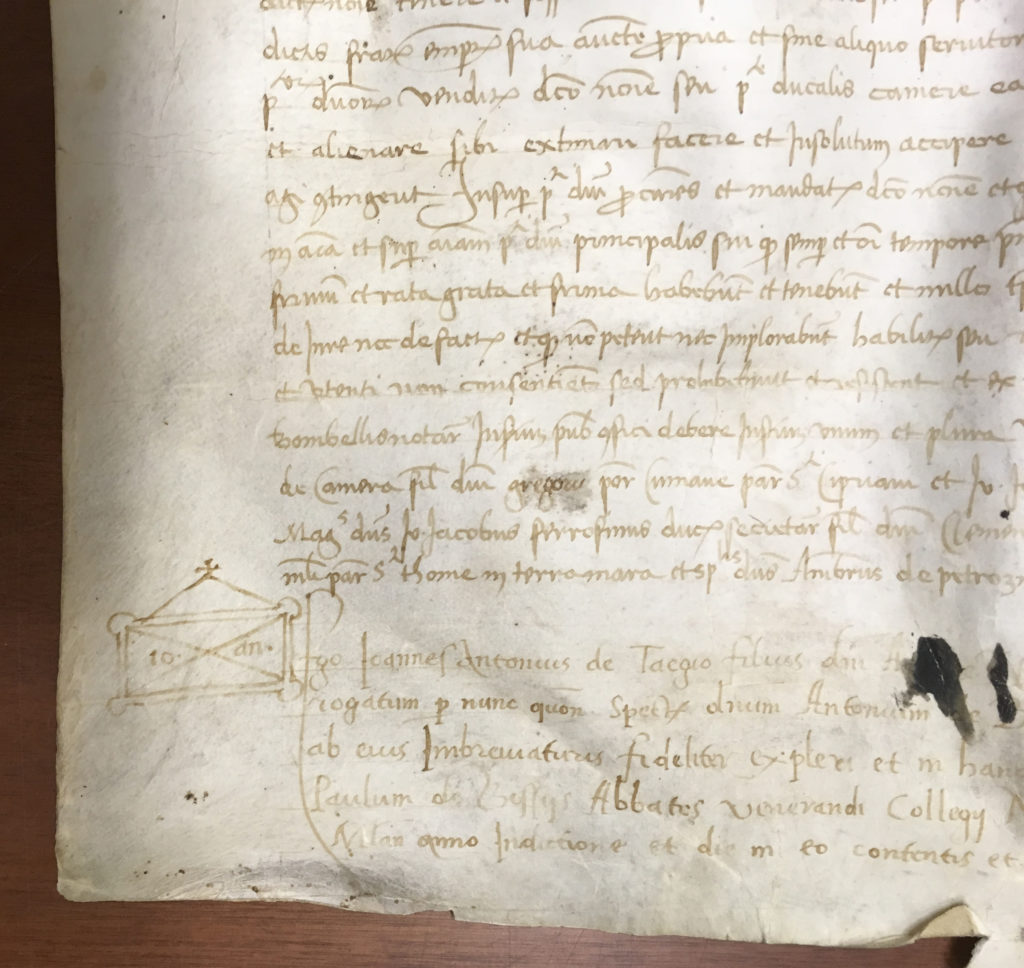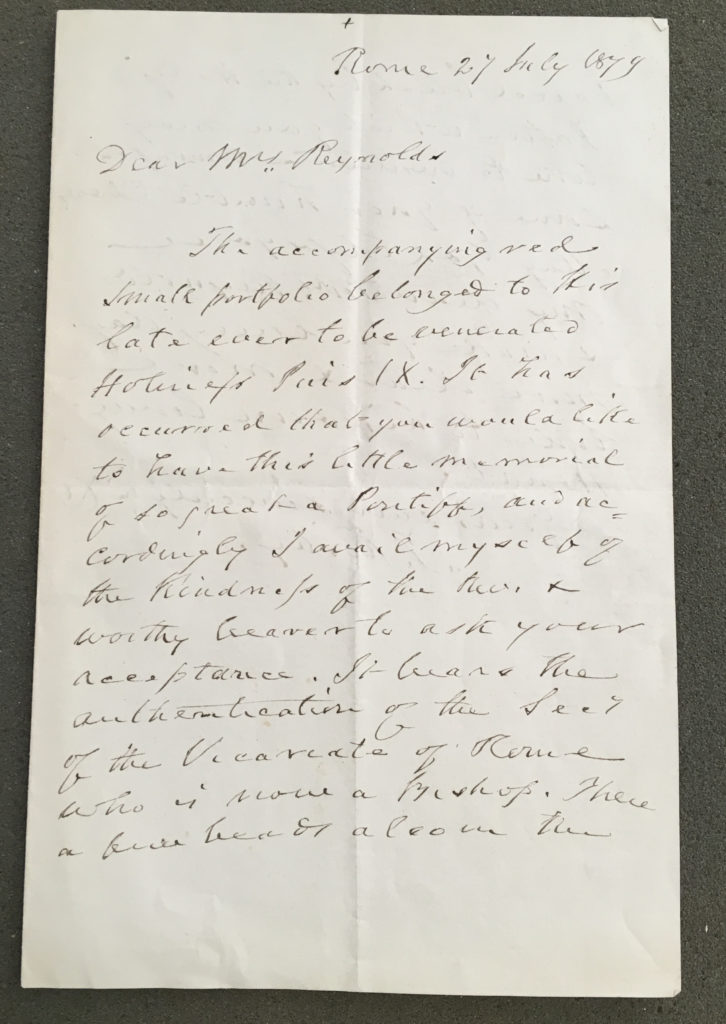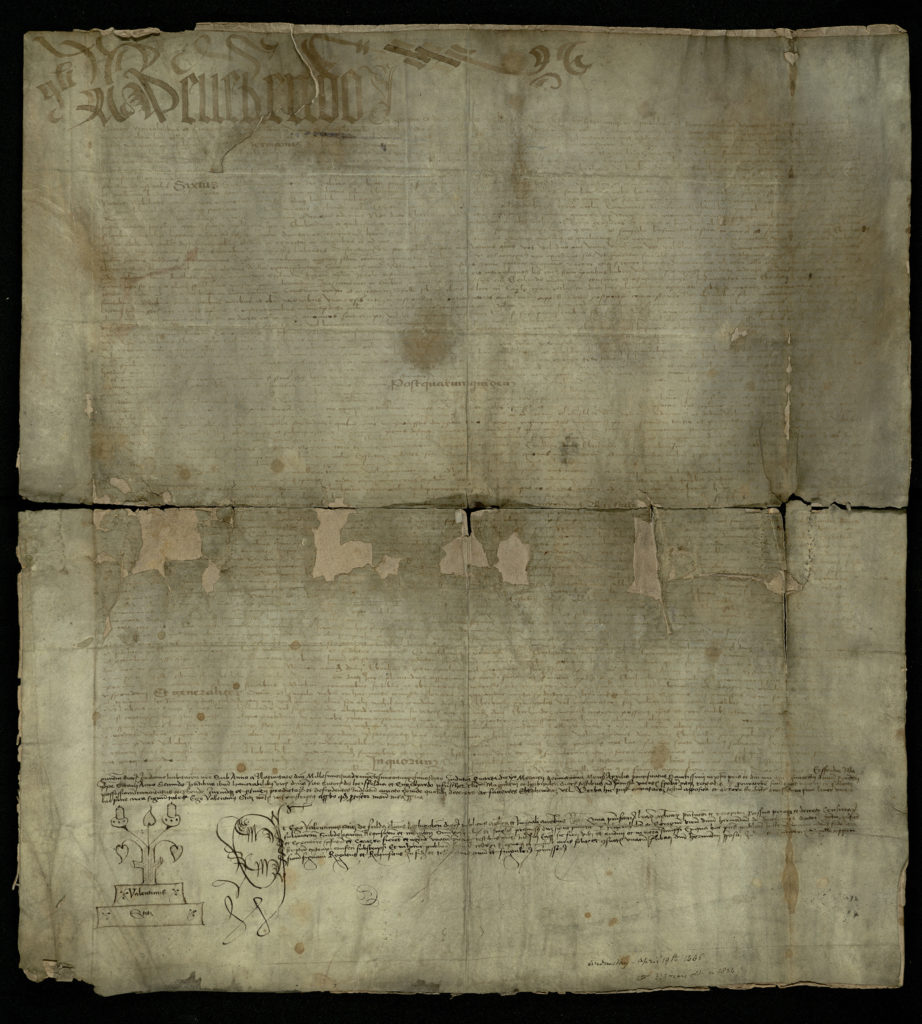We have nearly come to the end of #MedievalMonday posts. This week we’re going to look at two uncatalogued documents, neither of which have any provenance or accession number attached to them.
“Venditio facto in Nomine Ducalis Camerae, dominus Petro Martini et Francisco…”
The first document is dated 13 January 1497 [Milan?] and is a charter concerning property – perhaps vineyards – “in loco Altanelli”. It is notarized by Joannis Antonius de Taegio. Prince Ludovicus Maria Sfortia (Sforza) is mentioned on lines 4-5, and camera ducalis of Milan is identified.
Tipped inside the red portfolio in which the document was found is a letter, dated 27 July 1879, Rome, to a Mrs. Reynolds from a T. Kirby. It reads:
Dear Mrs. Reynolds
The accompanying red small portfolio belonged to His late ever to be venerated Holiness Pius IX. It has occurred that you would like to have this little memorial of so great a Pontiff, and accordingly I avail myself of the kindness of the Rev. & worthy bearer to ask your acceptance. It bears the authentication of the Sect of the Vicarate of Rome who is now a Bishop. There a [few?] [beads?] of a [leo?] in the parcel blest by the Holy Father which you may like to distribute amongst some of your humble [Ch?]. May God bless you my dear Mrs Reynolds & make you every day more dear & more like to his own loving Heart.
Yours ever sincerely in [Christ],
T. Kirby.
As far as I can tell, the College has never had a Fellow with the last name of Reynolds, although there were a couple with the last name of Kirby. Perhaps one of them was the donor of Venditio facto.
“Reverendo in [Christo] patri et domine”
I found the second document during my archives survey in the fall of 2015. Even less is known about this particular document. There is no record of it anywhere in the Library records or in Hirsch’s catalog. It is fairly poor condition, and although we’ve scanned it, I haven’t had time to manipulate enough (digitally) to figure out what, exactly it is.
It is dated; however: 19 April 1486. And if I hadn’t felt like looking for the date in the text, there’s a rather unhelpful note at the bottom of the document (thanks, 19th century!):
Wednesday April 19 1486
—> 338 years old in 1824
Also at the bottom of the document is what I’m assuming is a notary’s mark by a Valentinus Stitz[?]. Next to the mark, the text begins “Et ego Valentinus Stitiz[?] di fulda [stirus?]”. This document looks like a charter, but without further research I can’t be sure.
How did these documents get into our collection, and why do we have them? I would like to think that by digging deeper into early Library records I’ll be able to find the answer, but that’s often not the case in archives. Archivists joke about “gaps in the archives” but, although common, these gaps are very frustrating!
As much as I would love (almost) nothing more than to sit down with these documents and spend days – or even weeks – on them, I don’t have the time.
If you’re interested in coming in to work with either of these documents, please email us at library@collegeofphysicians.org to make an appointment.
Source:
Hirsch, Rudolf. A Catalogue of the Manuscripts and Archives of the Library of The College of Physicians of Philadelphia. Philadelphia, PA: 1983.








